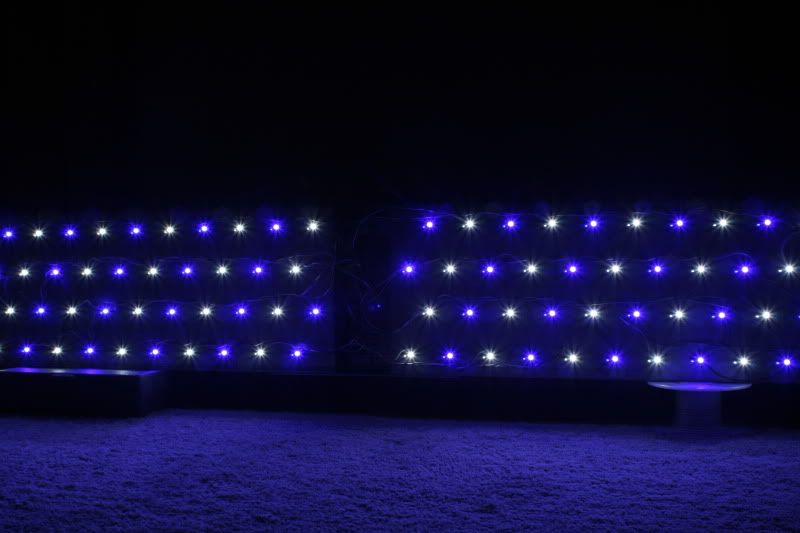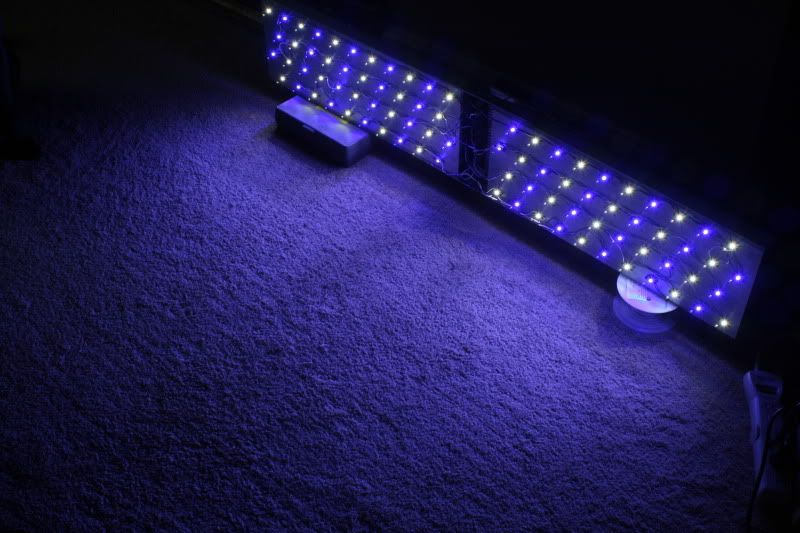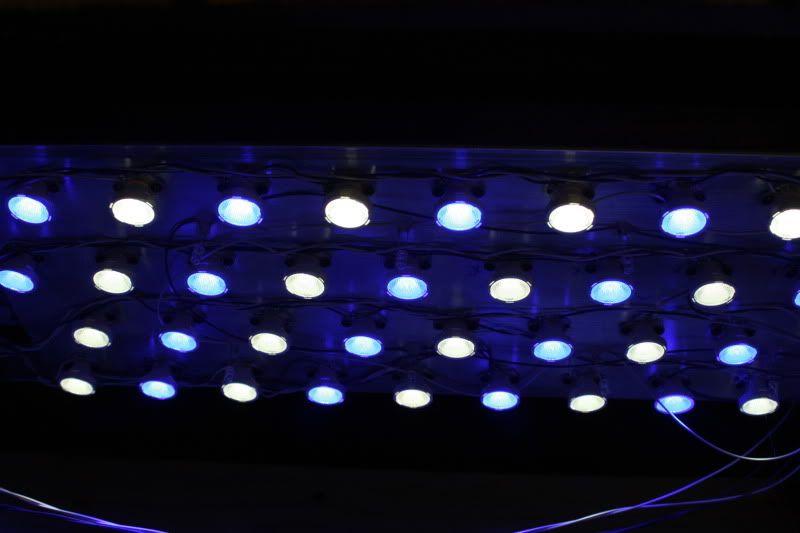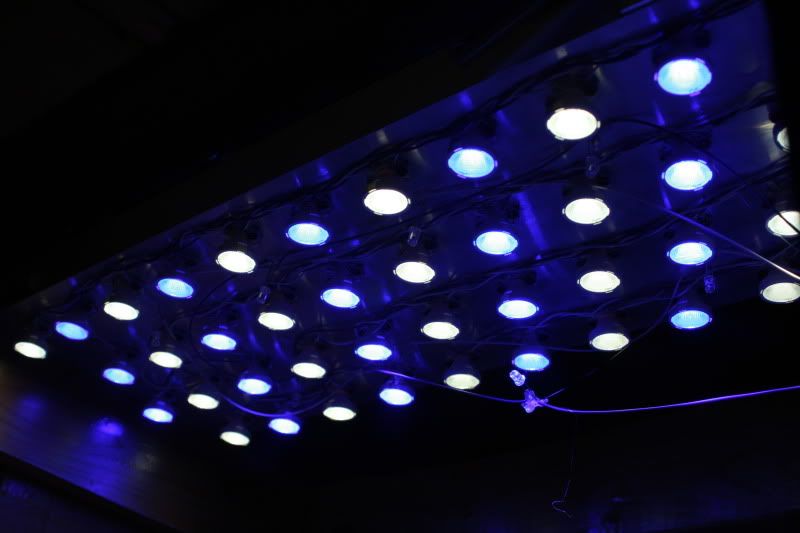Oh I hear ya 100% there  I'm designing our house now and it's a LOT of fun. I like to DO stuff but at the moment I have no "work shop' (unless you count the kitchen table). Once I get the house built I'll be back to DIY (more accurately called "Making lots of SCRAP")
I'm designing our house now and it's a LOT of fun. I like to DO stuff but at the moment I have no "work shop' (unless you count the kitchen table). Once I get the house built I'll be back to DIY (more accurately called "Making lots of SCRAP")
You are using an out of date browser. It may not display this or other websites correctly.
You should upgrade or use an alternative browser.
You should upgrade or use an alternative browser.
DIY LED Lighting... is it worth the effort?
- Thread starter chipmunkofdoom2
- Start date
bskinn77
Member
Ok some front what I just read the solaris 14" length (max size I would really want to attempt bulding at the moment) uses 30 leds Luxeon Rebel LEDs driven at 800 milliampere. Each Foot has 17 full spectrum 6500K leds,
11 Royal Blue, and 2 Cyan LEDs. That is about 100$ worth of LEDs ordered straight from Luxeon. I am a little drunk so forgive me if im wrong but besides the LEDs resistors and something pretty to mount them on where is the rest of the cost coming from?
11 Royal Blue, and 2 Cyan LEDs. That is about 100$ worth of LEDs ordered straight from Luxeon. I am a little drunk so forgive me if im wrong but besides the LEDs resistors and something pretty to mount them on where is the rest of the cost coming from?
All of our appliances require a constant voltage, either 110 or 220. When you turn on an appliance the voltage stays the same and the current will fluctuate depending on how much the appliance draws. LED's are a little different. They need to draw a steady current but the voltage will fluctuate. That's what the current regulators do.
bskinn77
Member
Do you have a link for the regulators ?
3023 Wired Buck Puck - LED Supply.com From what I have been reading you can wire up a max of 6 LEDs per buckpuck.
SemperSaint
Member
For my moonlights I use a 24 foot string of blue LED's I bought from Lowe's for 14.95. My 240 looks beautiful at night washed in dim blue light. It's a cheap way to go for effect. They're even enclosed in waterproof plastic.
Hi, i have been considering doing the same kind of project. have you got anywhere with this? Digikey shows the K . K = degrees celcius + 273.
I have been looking into some info as well, i noticed no one made comments on the viewing angle of a LED.. This is very important when considering the location and # required.
Consider an upside down 45 triangle put the point of the triangle at the focal point of the LED. or guess where it is, it would be the center of the light generated at the filiment if it is called that.. Then the sum of the angles would be 45 + 45. So the viewing angle would be 90 degrees.
light diminishes when it hits the water due to refraction.
the individual photon of light is a small packet with nearly no mass.
When the photon hits the surface of the water light bends
Think of a puck hitting the surface of the water on its face.
The angle of reflection is egual to the angle of incidence.
This will give you an idea of where your light is going around the tank.
Light dimishes as it acts upon particles in the water this is one reason why it gets darker. Also as it gets deeper the light is bent more.
You can see this with a prism it is the same affect you see the visible light as a rainbow split into ROYGBIV
I have seen some puck sealed units with a high viewing angle,high K and used by another person on a different site but i can't remember where it is.
I hope this helps
Dave
I have been looking into some info as well, i noticed no one made comments on the viewing angle of a LED.. This is very important when considering the location and # required.
Consider an upside down 45 triangle put the point of the triangle at the focal point of the LED. or guess where it is, it would be the center of the light generated at the filiment if it is called that.. Then the sum of the angles would be 45 + 45. So the viewing angle would be 90 degrees.
light diminishes when it hits the water due to refraction.
the individual photon of light is a small packet with nearly no mass.
When the photon hits the surface of the water light bends
Think of a puck hitting the surface of the water on its face.
The angle of reflection is egual to the angle of incidence.
This will give you an idea of where your light is going around the tank.
Light dimishes as it acts upon particles in the water this is one reason why it gets darker. Also as it gets deeper the light is bent more.
You can see this with a prism it is the same affect you see the visible light as a rainbow split into ROYGBIV
I have seen some puck sealed units with a high viewing angle,high K and used by another person on a different site but i can't remember where it is.
I hope this helps
Dave
calabdiver
Member
hello I have just read every post on this thread. I understand the idea of resisters and led's but what are the advantages if any of running a buckpuck over an A/C adapter? not to mention has anyone actually created a board I would very much like to see pics of the board with resisters. Also how did you solder them parralel? or sequence? I have a 12 gal. nano that I want to build this for so at this point I have no idea how many led's I will need for that many gal. and I am considering white, blue, and red led's. what do you think?
calabdiver
Member
http://cgi.ebay.com/225-LED-AQUARIUM-GROW-LIGHT-PANEL-HYDROPONIC-WHITE-110V_W0QQitemZ250426855627QQcmdZViewItemQQptZLH_DefaultDomain_0?hash=item3a4e9a90cb&_trksid=p3286.c0.m14&_trkparms=65%3A12%7C66%3A4%7C39%3A1%7C72%3A2102%7C240%3A1318%7C301%3A1%7C293%3A1%7C294%3A200
Has anyone seen this? If so what do you think of it?
Has anyone seen this? If so what do you think of it?
calabdiver
Member
So after more searching I have stumbled upon this price seems good and has a 12000-14000k rating and is 12"X12" square I think I will purchase this unit what do you think?
http://cgi.ebay.com/48-Watt-WHITE-BLUE-LED-Aquarium-and-Grow-Light-Panel_W0QQitemZ230294153425QQcmdZViewItemQQptZLH_DefaultDomain_0?hash=item359e99e8d1&_trksid=p3286.c0.m14&_trkparms=65%3A12%7C66%3A4%7C39%3A1%7C72%3A2102%7C240%3A1318%7C301%3A0%7C293%3A1%7C294%3A200
http://cgi.ebay.com/48-Watt-WHITE-BLUE-LED-Aquarium-and-Grow-Light-Panel_W0QQitemZ230294153425QQcmdZViewItemQQptZLH_DefaultDomain_0?hash=item359e99e8d1&_trksid=p3286.c0.m14&_trkparms=65%3A12%7C66%3A4%7C39%3A1%7C72%3A2102%7C240%3A1318%7C301%3A0%7C293%3A1%7C294%3A200
1ofManyNguyens
Member
So after more searching I have stumbled upon this price seems good and has a 12000-14000k rating and is 12"X12" square I think I will purchase this unit what do you think?
48 Watt WHITE + BLUE LED Aquarium and Grow Light Panel - eBay (item 230294153425 end time Jun-19-09 22:28:40 PDT)
I was looking at those lights last night and the white/blue one doesnt seem too bright.
calabdiver
Member
I emailed the seller to see if this light has ever been tested with coral but have not recieved an answer. However this is the only light I have found with a high enough kelvin rating that was in a decent price range.
I've been studying the whole LED thing for almost 2 years now. It is not cheap and you have to do it right the first time or you will blow all of the LEDs. My system cost around 900 for a 4 footer and about 60 shipped for all of the parts. If you are really interested in doing this, check out nano-reef.com or PM me and I can tell ya what I did. The people on nano reef know what they are talking about.
Here is what I built.






Here is what I built.






I just finished one too. Definitely a cool project to start, but RYE is right, do your research and do it right the first time. I did a 36" one with 66 LEDs. I put all of mine in a straight line instead of staggered like RYEs. In hind sight I should've done it that way...live and learn. The guys at Nano Reef are really a great help. I'll post some pics as soon as I have some.
TS
TS
suicidehero
New Member
My local fish store has these strip lighting bulbs that have LEDs in them, so you just replace them w/ your regular bulbs.
They look kinda like this
----------------------------------------------------------------------
= 88888888888888888888888888888888888888888888888888888888888 =
----------------------------------------------------------------------
They look kinda like this
----------------------------------------------------------------------
= 88888888888888888888888888888888888888888888888888888888888 =
----------------------------------------------------------------------
My local fish store has these strip lighting bulbs that have LEDs in them, so you just replace them w/ your regular bulbs.
They look kinda like this
----------------------------------------------------------------------
= 88888888888888888888888888888888888888888888888888888888888 =
----------------------------------------------------------------------
Be warned they may be MOONLIGHTS and not be strong enough to promote photosynthesis in a reef tank.
wow, been a long time since I last been to this site.
over at nano reef there is a huge DIY LED following with many many members making their own lights.
Ultimate LED Guide
Dont really mean to plug that forum but the LED guide is priceless and the author has vast knowledge on the subject.
I've always been intrigued by DIY LED. especially when the PAR ratings is incredible. MH PAR for something that uses less electricity, less heat, and lasts 5-7 years? whats not to like? well the cost I guess it can get pricey.
it can get pricey.
Someday tho, i'll be making my own LED lighting. probably start small for a nano/pico tank or maybe a 'fuge light. too many other projects have priority now
over at nano reef there is a huge DIY LED following with many many members making their own lights.
Ultimate LED Guide
Dont really mean to plug that forum but the LED guide is priceless and the author has vast knowledge on the subject.
I've always been intrigued by DIY LED. especially when the PAR ratings is incredible. MH PAR for something that uses less electricity, less heat, and lasts 5-7 years? whats not to like? well the cost I guess
Someday tho, i'll be making my own LED lighting. probably start small for a nano/pico tank or maybe a 'fuge light. too many other projects have priority now
